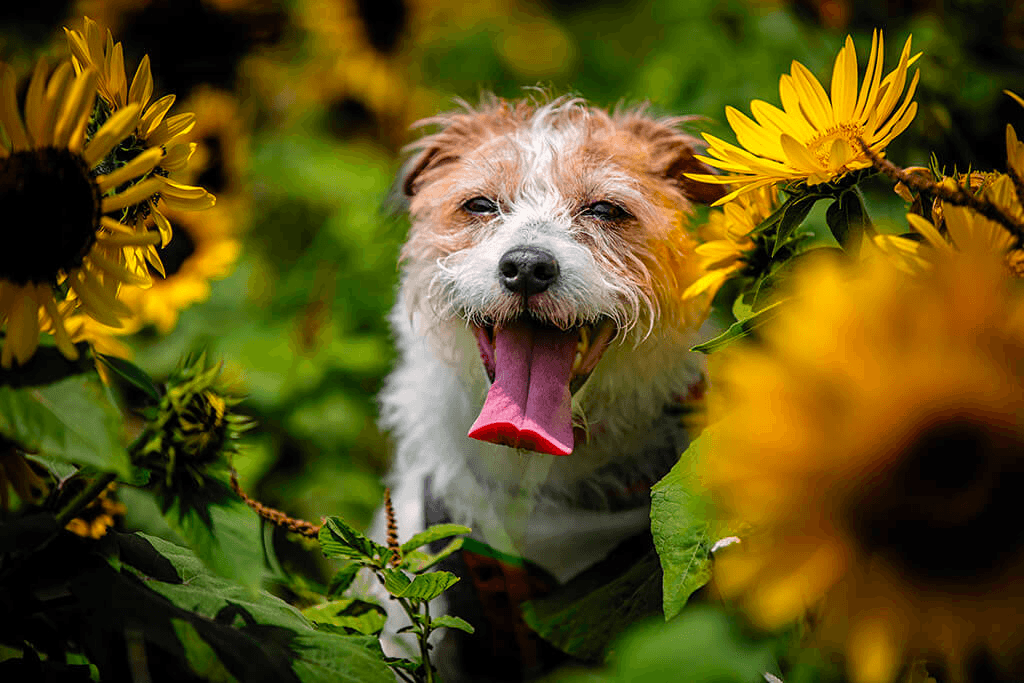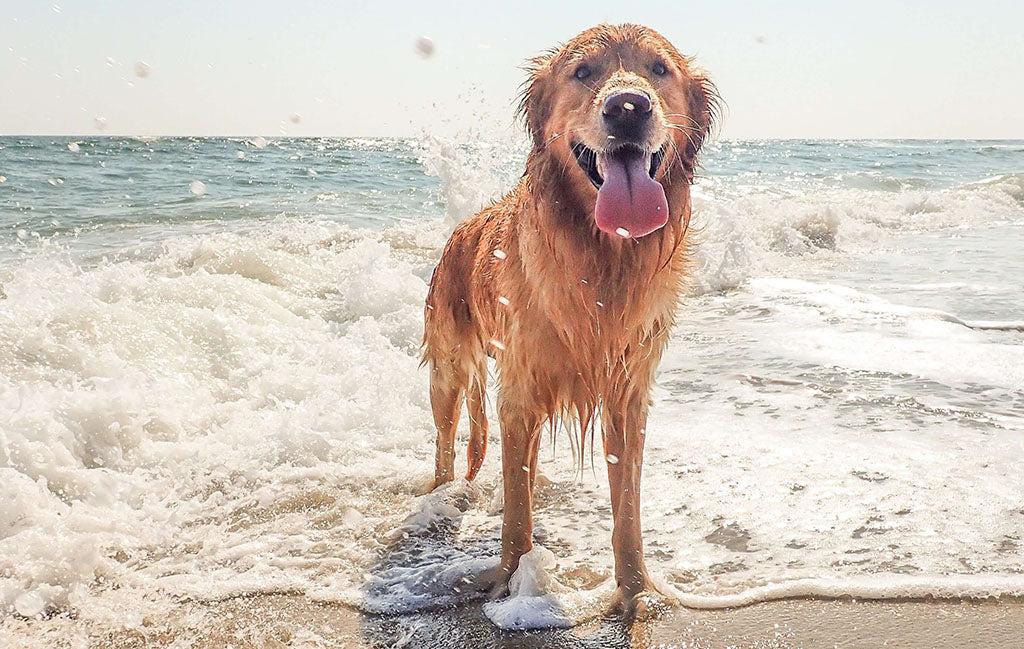Can dogs have Imodium? Read on to learn situations where Imodium should be avoided, go over alternative safe home remedies for diarrhea, and let you know when to seek veterinary care.
- Home/
- Dog/
- Health & Wellness/
- Can I Give My Dog Imodium? A Vet Explains Potential Risks
Can I Give My Dog Imodium? A Vet Explains Potential Risks

Imodium (loperamide) is an over-the-counter medication commonly used to treat diarrhea in humans, but is it safe for dogs?
While Imodium may be helpful in some cases, it is not FDA-approved for use in dogs and carries potential risks, especially for some breeds and dogs with underlying health conditions.
Understanding the risks and proper use of Imodium in dogs can help you make informed decisions if your dog experiences digestive issues.
Is Imodium Safe for Dogs?
If your dog is experiencing diarrhea, it is likely you have looked at over-the-counter diarrhea medications and wondered, ‘Can I give my dog Imodium for diarrhea?’
Loperamide, the active ingredient in Imodium, is a medication that is part of a class of drugs called opioid receptor agonists. Loperamide controls diarrhea symptoms by attaching to opioid receptors in the gut, which slows down contractions in the intestines. This slows the frequency of bowel movements and allows more water to be absorbed from stools, making the feces less watery.
In humans, Imodium is used to control symptoms associated with several different gut conditions, including Crohn’s and irritable bowel syndrome.
In veterinary medicine, a veterinarian might recommend giving Imodium to a dog that has mild, acute, non-specific diarrhea, which means ‘diarrhea that happened all of a sudden but doesn’t appear to have an identifiable cause’. It has also been prescribed to dogs for irritable bowel syndrome (aka stress diarrhea) and fecal incontinence.
Dangers of Imodium for Dogs
In general, Imodium is safe for use in most otherwise healthy dogs. Even though it is an opioid agonist, it doesn’t produce systemic side effects like other opiate agonists (such as morphine) and does not cross the blood-brain barrier.
The most common side effects of Imodium seen in dogs are bloating (non-lethal), constipation, and low energy. Excessive use of Imodium will cause constipation in most dogs. If you notice side effects in your dog, stop giving them Imodium and call your vet. The medication is short-acting and should be eliminated from your dog’s body within 24 hours.Some breeds of dogs, including Sheepdogs, Collies, and mixed breeds that include herding dogs, may be more sensitive to Imodium due to an MDR1 genetic mutation. Giving Imodium to these dogs may cause extreme sedation and should be avoided. If you are unsure if Imodium is safe for your dog, ask your veterinarian before giving Imodium to your dog.
How Much Imodium Can I Give My Dog?
Imodium is a human over-the-counter drug. The dosage of Imodium used in dogs has not been established in the literature, is not based on clinical trials, and is empirical, meaning it is based upon the observations of veterinarians who have prescribed the medication.
A veterinarian must give you the appropriate dose of Imodium to give your dog, and you must understand that their prescribing directions may be significantly different from what is written on the label.
Imodium comes in a 2 mg tablet or oral liquid that varies in concentration, but is often dosed at 0.2 mg/ml. The standard dosage of Imodium for dogs is 0.1 milligrams per kilogram of body weight every 8 to 12 hours as needed to control diarrhea symptoms, however, your veterinarian will prescribe the safest, most appropriate dose for your dog.
| Dog Weight (kg) | Dosage (mg) | Liquid Amount (0.2 mg/ml) | Note |
| 5 kg | 0.5 mg | 2.5 ml | Every 8-12 hrs |
| 10 kg | 1 mg | 5 ml | Every 8-12 hrs |
| 15 kg | 1.5 mg | 7.5 ml | Every 8-12 hrs |
| 20 kg | 2 mg | 10 ml | Every 8-12 hrs |
| 25 kg | 2.5 mg | 12.5 ml | Every 8-12 hrs |
| 30 kg | 3 mg | 15 ml | Every 8-12 hrs |
It bears repeating that Imodium should only be given to a dog when it has been prescribed by a licensed veterinarian. Do not give this medication to your dog without first consulting with a vet.
If you miss a dose of Imodium, give the next dose as soon as you remember. If it is close to the time when the next dose is due, skip the missed dose and give the next dose at the regularly scheduled time. Never double up doses to ‘catch up’ as this increases the risk of an overdose and negative side effects.
Remember that Imodium doesn’t eliminate the cause of diarrhea, it just masks the symptoms. If your dog is experiencing repeated diarrhea, not responding to the medication, or is acting sick in any other way, then giving more Imodium isn’t going to solve the problem. In these cases, take them to a veterinarian to diagnose and treat the underlying problem.
When to Avoid Giving Imodium to Your Dog
While many dogs can safely take Imodium, some dogs should not be given Imodium, including:
- Dogs with liver disease, kidney disease, or respiratory issues
- Dogs with an intestinal bacterial infection
- Dogs with intestinal cancer, tumors, or blockage
- Dogs that have accidentally ingested a toxin or have food poisoning
- Dogs with intestinal parasites
- Dogs with head injuries
- Dogs with hormonal disorders such as Addison’s disease or hypothyroidism
- Dogs who are pregnant or nursing
- Dogs who are very old or debilitated
- Dogs who have the MDR1 genetic mutation
Imodium Allergy
Some dogs can be allergic to Imodium. If your dog displays any signs of allergy after taking the medication (swollen face, hives, itching, difficulty breathing), stop giving the medication and call your veterinarian.
Imodium with Other Medications
Imodium interacts negatively with several medications, and should be used with caution in dogs that are receiving any of the following drugs:
- Antibiotics
- Azole antifungals
- Chemotherapy
- Heart medications
- Blood pressure medications
Be sure to tell your veterinarian about all medications, vitamins and herbs that your dog is receiving before they are prescribed Imodium.
Loperamide can also cause alterations in blood tests, so be sure to let your veterinarian know that your dog has received Loperamide before blood tests are run.
Safer Alternatives to Imodium for Dogs
While Imodium is a highly convenient solution, there are other alternatives available that may be safer for your dog.
If your dog has diarrhea, one of the most effective things you can do is ‘rest’ their intestines for several hours by removing access to all food. Still provide full access to fresh, clean water. This can often calm down an upset stomach.In addition, many people find success by feeding their dog a bland diet that includes rice and low-fat cottage cheese or boiled chicken breast for several days until the stool looks normal again.
When to See a Vet for Dog Diarrhea
If you see any of the following symptoms in your dog, these are signals that veterinarian intervention is required:
- Bloody or black, tarry feces
- Diarrhea that lasts longer than a day
- Repeated vomiting/can’t keep anything down
- Bloody vomit
- Bloated abdomen in conjunction with vomiting
- Not eating for more than one day
- Low energy for more than one day
- Not drinking or signs of dehydration
- Dark red or very pale gums
- Abnormal changes in behavior
- Any time you are worried
If any of the above occur, take your dog to the veterinarian the same day, as some of these symptoms are associated with painful and potentially fatal conditions.
Final Thoughts
Remember that Imodium only treats the symptoms and doesn’t resolve the underlying causes of diarrhea. In addition, Imodium is not safe for use in all dogs and can have negative interactions with other drugs. Using Imodium in dogs is considered off-label, and Imodium should only be used in dogs under the direct supervision of a licensed veterinarian. Several other veterinary-recommended treatments for diarrhea in dogs can be used instead of Imodium. The bottom line is that before you reach for Imodium to give to your dog, talk to your vet.
Sources
https://www.ncbi.nlm.nih.gov/books/NBK557885
https://www.jpsmjournal.com/article/S0885-3924%2811%2900263-6/fulltext
https://pubmed.ncbi.nlm.nih.gov/25475169
https://www.veterinaryemergencygroup.com/post/dog-dehydration

 S
S



